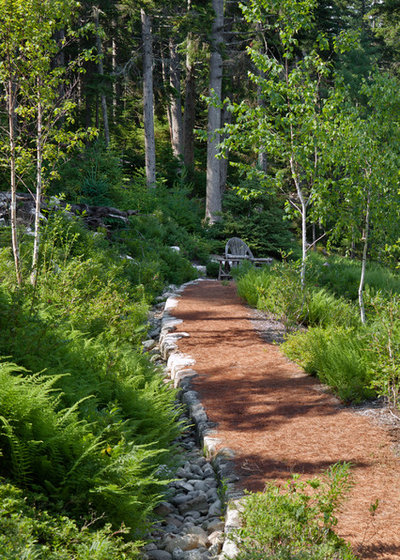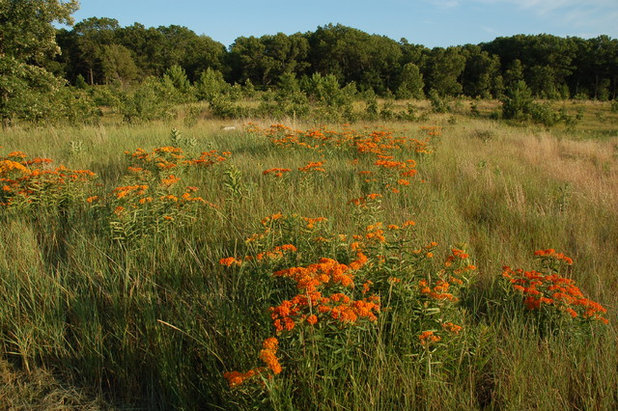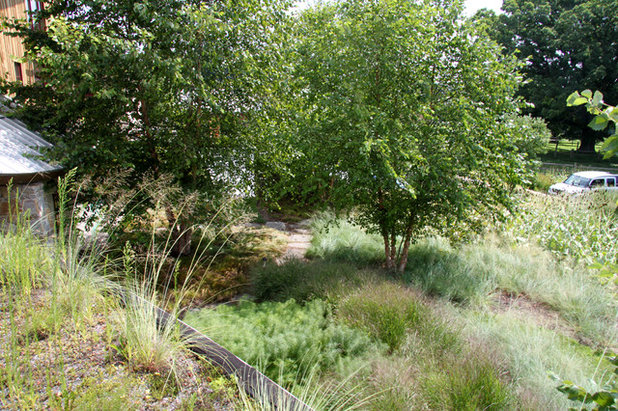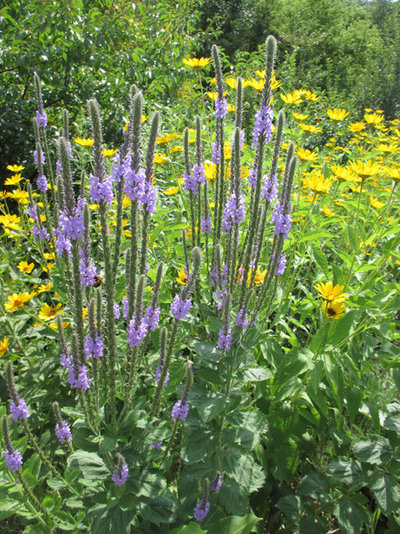Drive around any city, and the landscapes you see may be as much filled with mulch as with plants. Plants aren’t allowed to touch, which leads to the ground being open to sunlight and weed seeds. Besides being susceptible to weeds, this style of landscape requires annual maintenance, and the design doesn’t reflect how plants grow in nature. How can we get back to a more natural aesthetic that mitigates the need for yearly wood mulch applications and supports more wildlife?

Matthew Cunningham Landscape Design LLC
First, we have to get over the fear of cooties when it comes to our planting. You remember those from grade school, right? If someone touched you, the world might end. Plants
want to touch. Research shows that plants transmit all sorts of beneficial messages to one another above and below the ground, sharing resources and information like “I’m being attacked by a bug, so you need to produce more anti-bug toxins to survive.” They want to bang into one another and trade secrets, and they want to compete. That competition is what helps a landscape thrive, because through competition, undesirable plants can’t get a foothold.

Sparrow Landscaping LLC
Below the soil line is where tightly placed plants can do a world of good. If we design our gardens so that plants with deep taproots are placed among a larger group of plants with fibrous root masses, we’ve effectively taken over the soil. All the plants we want are getting what they need. Very few weeds can get the water or nutrients they need when we’re planting for below-ground structure, while the plants we do want are thriving because they’ve been provided the niches they prefer.
These orange blooms are deeply rooted butterfly milkweed (
Asclepias tuberosa) among prairie grasses. This wild space can teach us how to use the same plants at home.

jonathan alderson landscape architects, inc.
Above the soil line, plants act as green mulch in another, more obvious, way — through size, texture and number. If we have a great number of plants, we’re conserving soil moisture while decreasing the ability for weeds to establish. I stopped following plant tag spacing guidelines long ago — they often aren’t suited to my region. I observe what the plants do in the wild and attempt to mimic that. This often means much tighter spacing.
After reducing spacing, we can vary the heights and structure, creating levels, or tiers, that shade the soil even more, all the while providing new types of habitat for even more wildlife species. Place a clump of shrubs among a small meadow with short grasses, ground cover sedge (
Carex spp.) and flowers that reach a few feet tall; we start to build an environment, not just a garden. By using plants with thin leaves, big leaves, long leaves and short leaves, we increase the green mulch capabilities even more.

Holm Design & Consulting LLC
Every region and site will require different plants, so there’s no hard and fast plant list to provide. An effective designer will know the plants that will work in your area — hopefully a good number of which are native, adapted to the climate and wildlife — and how those plants communicate and work with one another above and below the soil.
Find plants native to your U.S. region
A garden that’s diverse in structure, serving as wildlife habitat and low-maintenance green mulch, should also be planned to shift and morph over time. There may be early successional plants that establish quickly, outcompeting early weeds and creating quick green mulch, only to give way as slower-to-establish plants come on. Plants will move, creep, bump, grind and mingle with another, and sometimes you’ll need to lightly manage that evolving design so it pleases you aesthetically but also keeps working as intended.





